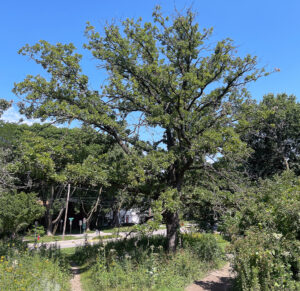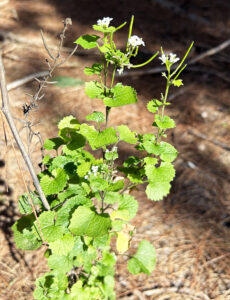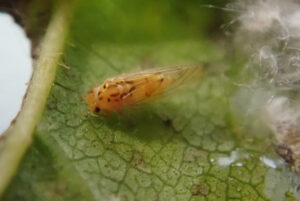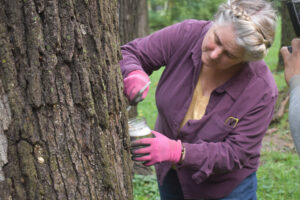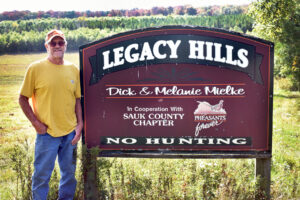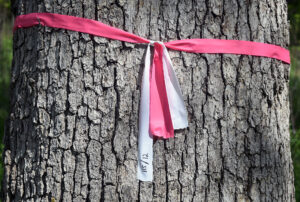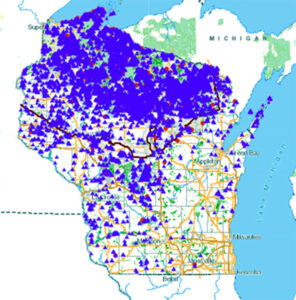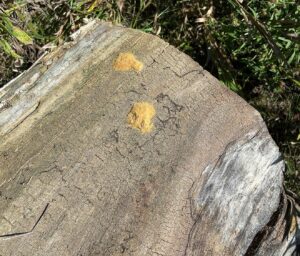
A pair of spongy moth egg masses attached to a piece of firewood. Moving this firewood to another site could put trees at that site at risk in the spring. / Photo Credit: Wisconsin DNR
By Art Kabelowsky, DNR Forest Health Outreach/Communications
Arthur.Kabelowsky@wisconsin.gov or 608-335-0167
Are you generally hesitant to give hitchhikers a free ride?
October was National Firewood Awareness Month, and even though November has arrived, the Wisconsin Department of Natural Resources (DNR) continues to urge residents and visitors to follow the same line of thinking when it comes to moving firewood.
That’s because tree-killing hitchhikers often lurk on or in firewood — including spongy moth, emerald ash borer, the fungus that causes oak wilt and other invasive insects and fungi. When untreated, infested firewood is transported away from where the tree died, those pests and fungi can later emerge to attack trees at the new site. This can happen whether that new location is in the next town or hundreds of miles away.
Continue reading “Don’t Let Tree Trouble Hitch A Ride On Firewood”

